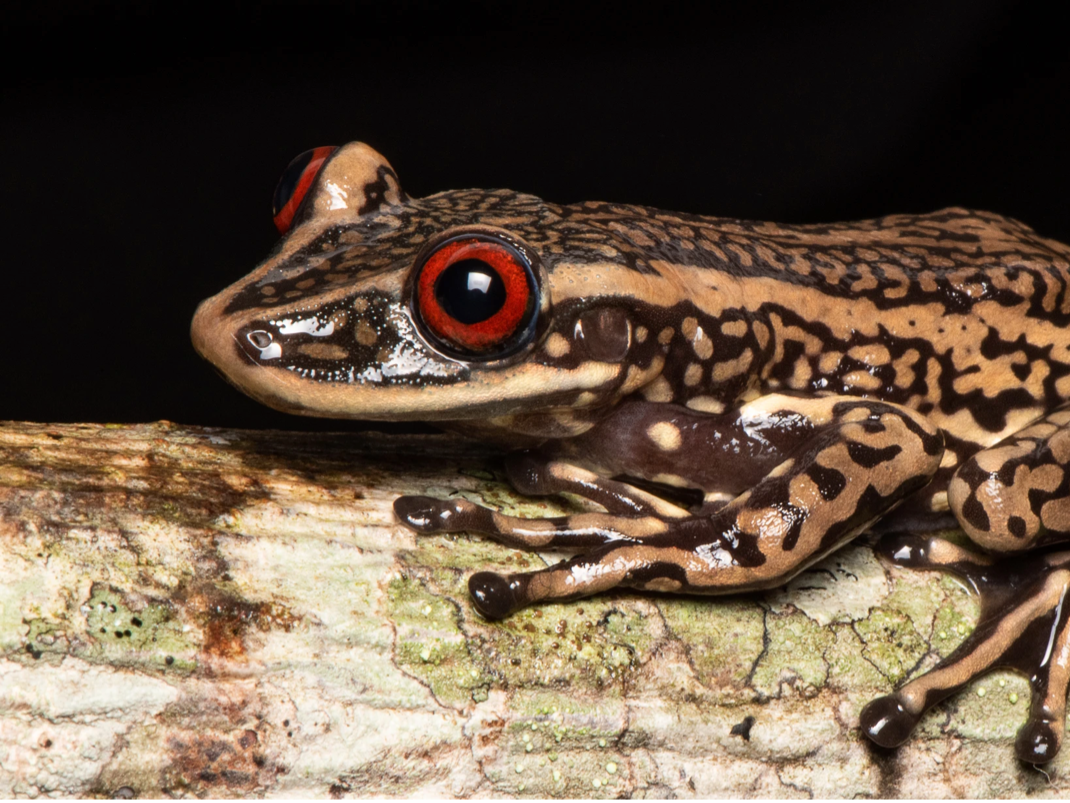異なるクラスの自然生息地の断絶がもたらす結果 The consequences of disconnecting different classes of natural habitats
2023-03-07 ペンシルベニア州立大学(PennState)
 The River Pomba Helmet Frog (Nyctimantis pomba); an endangered amphibian species from Brazil that has low microbiome diversity. Credit: Pedro Peloso. All Rights Reserved.
The River Pomba Helmet Frog (Nyctimantis pomba); an endangered amphibian species from Brazil that has low microbiome diversity. Credit: Pedro Peloso. All Rights Reserved.
この問題について、ペンシルバニア州立大学の生物学准教授Gui Becker氏をリードとする研究チームが行った最新の研究によると、環境分断は両生類の病気免疫に重要な影響を与えることが明らかになった。彼らは、環境分断が両生類の微生物の構成変化、正常な免疫系の発達の妨げ、ストレスの増加などによって、病気のリスクを高めることを提唱し、複数の自然環境のクラスをつなぐ森林と水などのハビタットの再生戦略が脊椎動物の免疫応答を強化する可能性があると述べた。
また、脊椎動物の免疫応答に影響を与える重要な因子として、両生類の皮膚微生物群集に着目し、絶滅の危機に瀕する43種の両生類と90種の非絶滅種を比較して、絶滅の危機に瀕する両生類は、皮膚微生物群集の種類が少ないことが明らかになった。
これらの研究は、野生動物が気候変動や病原体、汚染や環境分断といった人為的ストレスに直面している中で、個体群の弾力性を高める要因を理解することが重要であると指摘している。
<関連情報>
- https://www.psu.edu/news/research/story/habitat-split-may-impact-disease-risk-amphibians-and-other-vertebrates/
- https://onlinelibrary.wiley.com/doi/abs/10.1111/brv.12927
両生類における疾病のドライバーとしての生息地の分裂 Habitat split as a driver of disease in amphibians
C. Guilherme Becker, Sasha E. Greenspan, Renato A. Martins, Mariana L. Lyra, Paula Prist, Jean Paul Metzger, Vinicius São Pedro, Célio F. B. Haddad, Emily H. Le Sage, Douglas C. Woodhams, Anna E. Savage
Biological Reviews Published: 04 January 2023
DOI:https://doi.org/10.1111/brv.12927
ABSTRACT
Anthropogenic habitat disturbance is fundamentally altering patterns of disease transmission and immunity across the vertebrate tree of life. Most studies linking anthropogenic habitat change and disease focus on habitat loss and fragmentation, but these processes often lead to a third process that is equally important: habitat split. Defined as spatial separation between the multiple classes of natural habitat that many vertebrate species require to complete their life cycles, habitat split has been linked to population declines in vertebrates, e.g. amphibians breeding in lowland aquatic habitats and overwintering in fragments of upland terrestrial vegetation. Here, we link habitat split to enhanced disease risk in amphibians (i) by reviewing the biotic and abiotic forces shaping elements of immunity and (ii) through a spatially oriented field study focused on tropical frogs. We propose a framework to investigate mechanisms by which habitat split influences disease risk in amphibians, focusing on three broad host factors linked to immunity: (i) composition of symbiotic microbial communities, (ii) immunogenetic variation, and (iii) stress hormone levels. Our review highlights the potential for habitat split to contribute to host-associated microbiome dysbiosis, reductions in immunogenetic repertoire, and chronic stress, that often facilitate pathogenic infections and disease in amphibians and other classes of vertebrates. We highlight that targeted habitat-restoration strategies aiming to connect multiple classes of natural habitats (e.g. terrestrial–freshwater, terrestrial–marine, marine–freshwater) could enhance priming of the vertebrate immune system through repeated low-load exposure to enzootic pathogens and reduced stress-induced immunosuppression.


